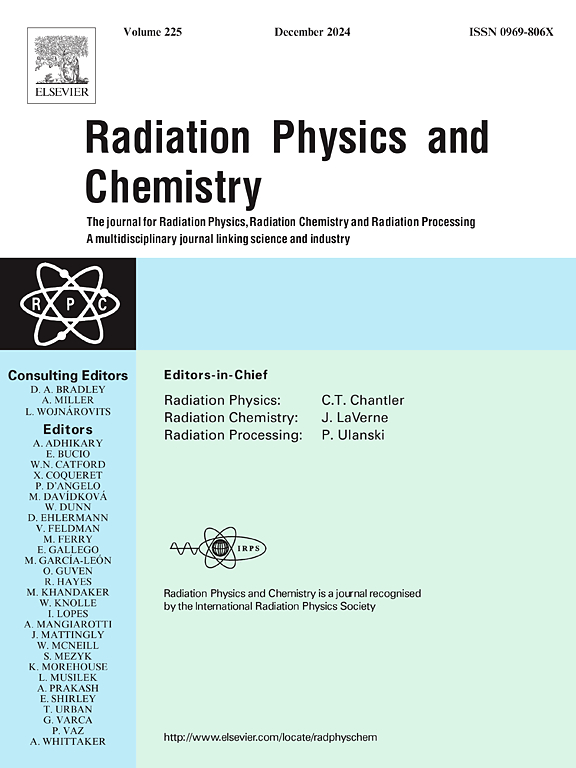Enhancing biomedical applications of Ti–6Al–4V alloys: The role of boron nitride and titanium diboride coatings in mechanical and radiation shielding performance
IF 2.8
3区 物理与天体物理
Q3 CHEMISTRY, PHYSICAL
引用次数: 0
Abstract
This study investigates the enhancement of mechanical and radiation attenuation properties of Ti–6Al–4V alloy through surface modification using Boron Nitride (BN) and Titanium Diboride (TiB2) coatings. The samples were produced using Selective Laser Melting (SLM) and coated via cathodic arc physical vapor deposition (PVD). SEM analyses confirmed the uniform distribution of coatings and their compatibility with theoretical thickness calculations. Mechanical tests revealed that the coatings improved hardness and wear resistance, with BN providing a lower friction coefficient and TiB2 exhibiting superior wear resistance. Radiation attenuation tests showed that TiB2 coatings significantly enhanced the linear attenuation coefficient (LAC) at 1.173 MeV, while BN coatings demonstrated superiority in mass attenuation coefficient (MAC). Improvements were also observed in HVL, TVL, and MFP parameters. These findings suggest that BN and TiB2 coatings can optimize the mechanical durability and radiation resistance of Ti–6Al–4V alloy for biomedical applications.
求助全文
约1分钟内获得全文
求助全文
来源期刊

Radiation Physics and Chemistry
化学-核科学技术
CiteScore
5.60
自引率
17.20%
发文量
574
审稿时长
12 weeks
期刊介绍:
Radiation Physics and Chemistry is a multidisciplinary journal that provides a medium for publication of substantial and original papers, reviews, and short communications which focus on research and developments involving ionizing radiation in radiation physics, radiation chemistry and radiation processing.
The journal aims to publish papers with significance to an international audience, containing substantial novelty and scientific impact. The Editors reserve the rights to reject, with or without external review, papers that do not meet these criteria. This could include papers that are very similar to previous publications, only with changed target substrates, employed materials, analyzed sites and experimental methods, report results without presenting new insights and/or hypothesis testing, or do not focus on the radiation effects.
 求助内容:
求助内容: 应助结果提醒方式:
应助结果提醒方式:


